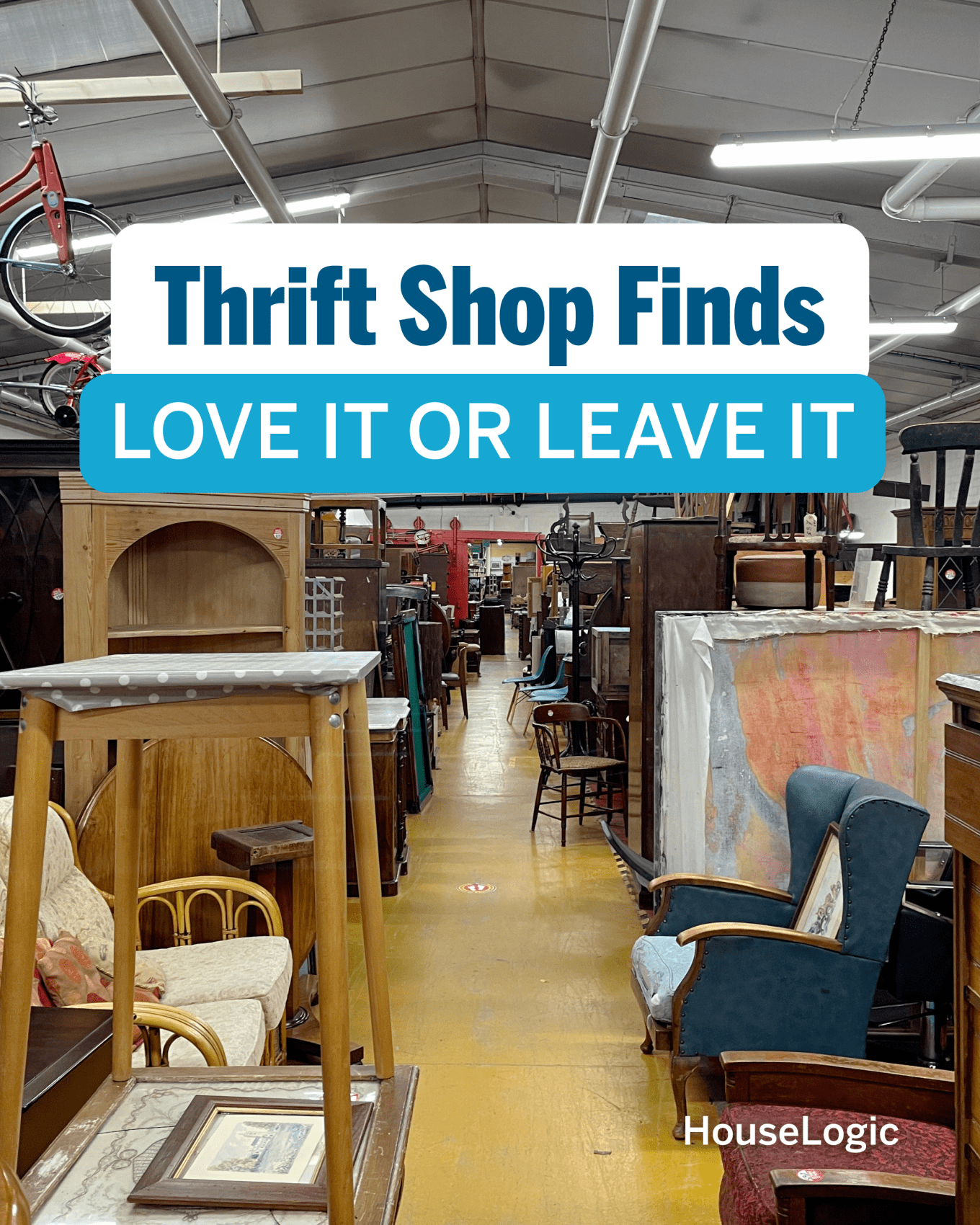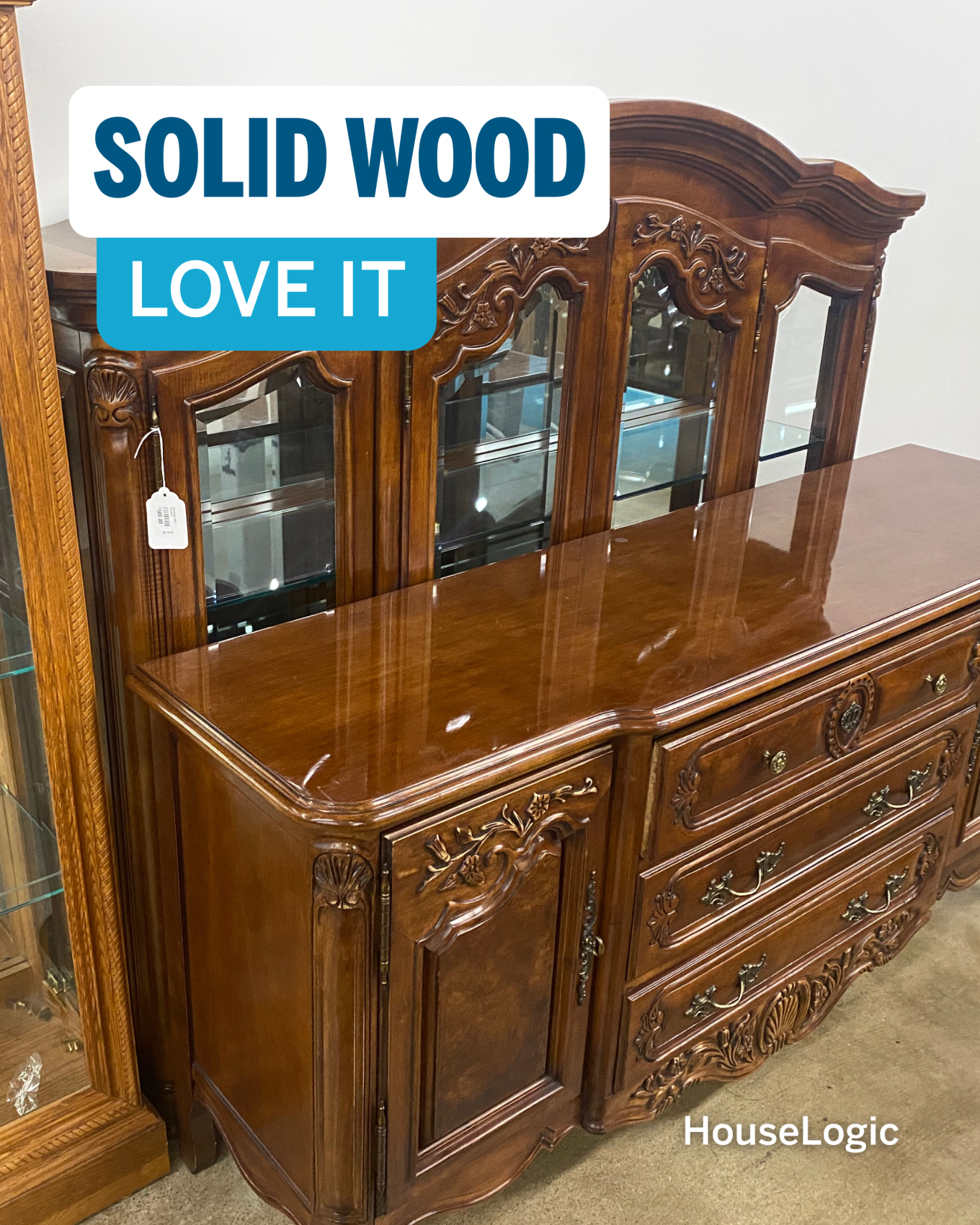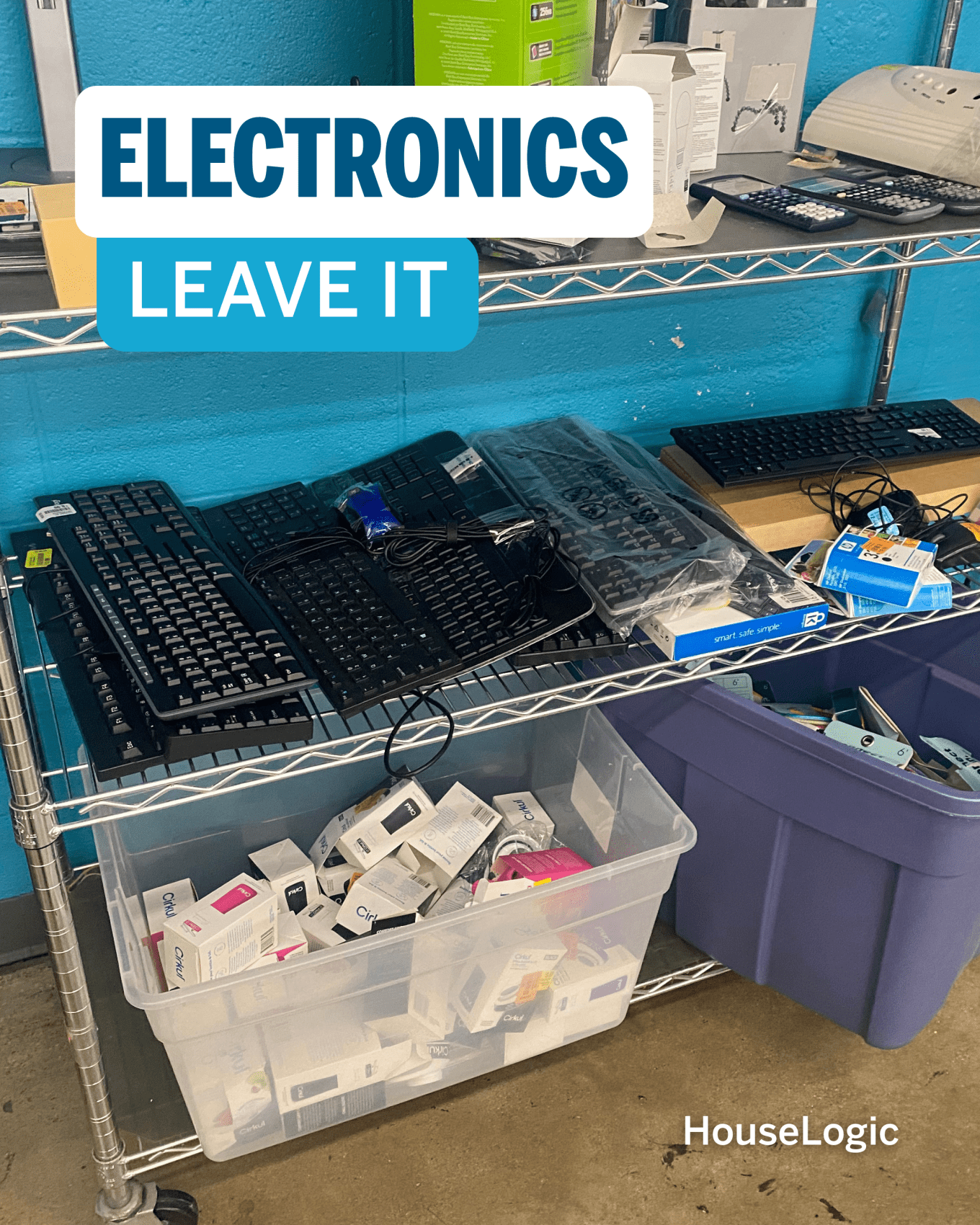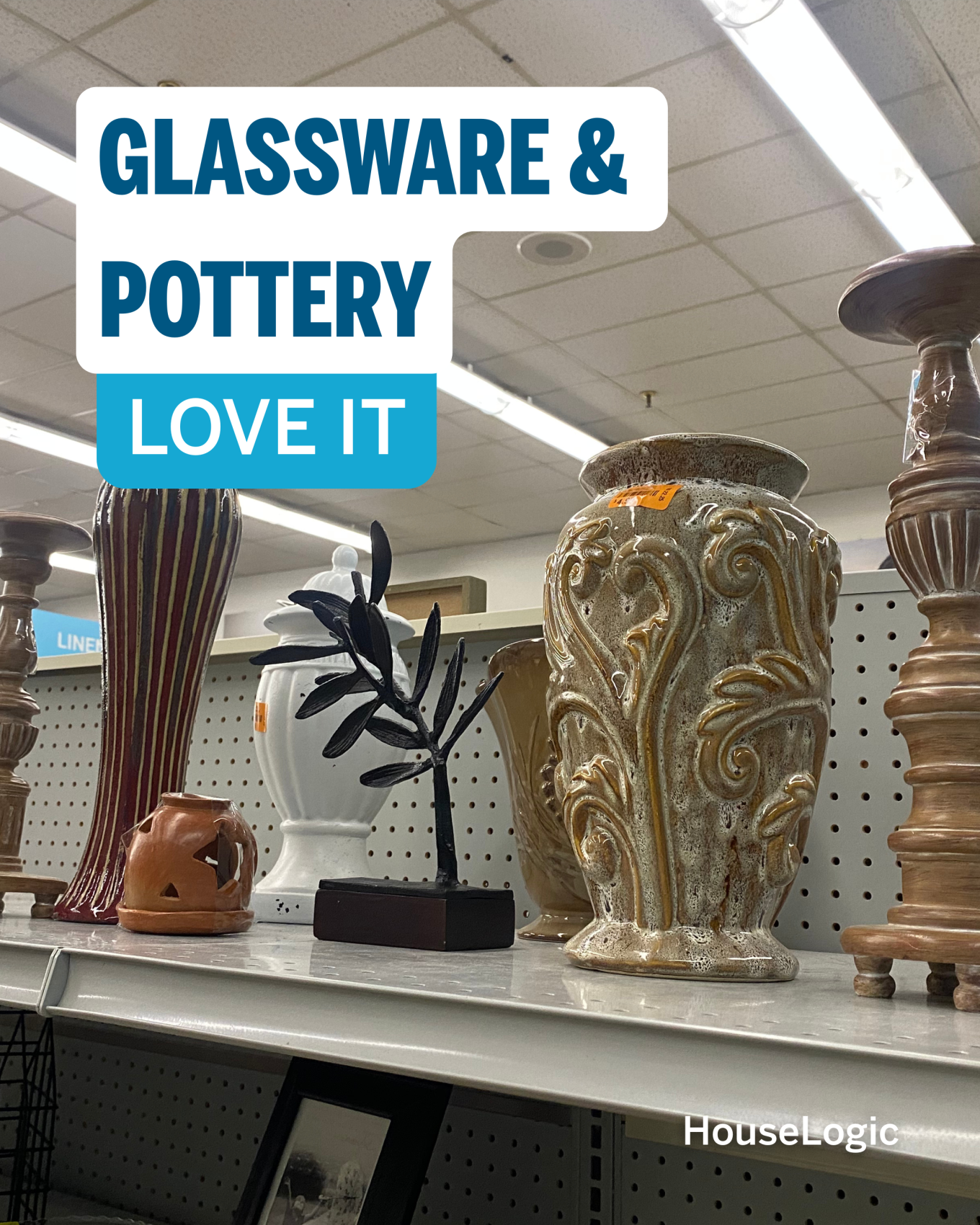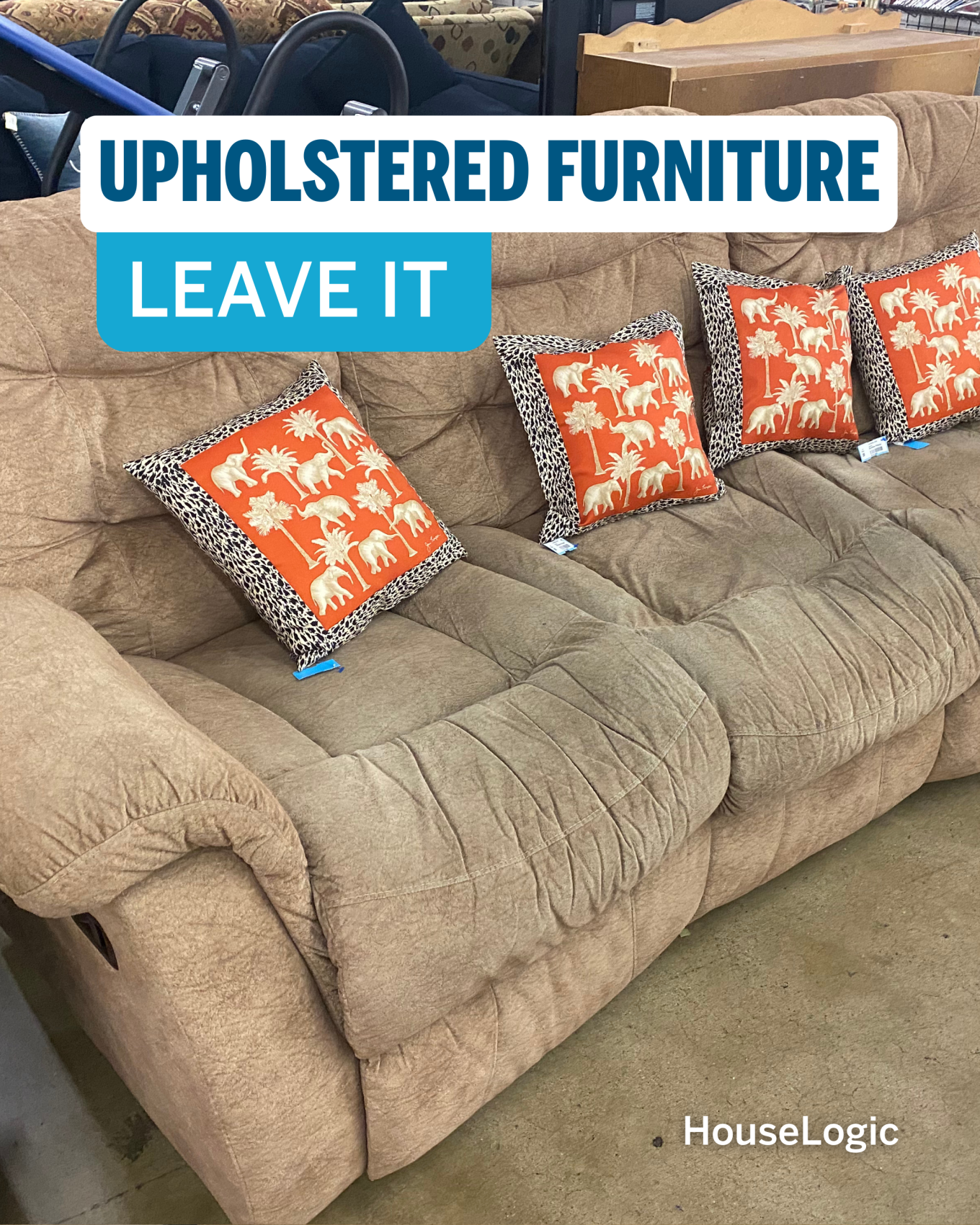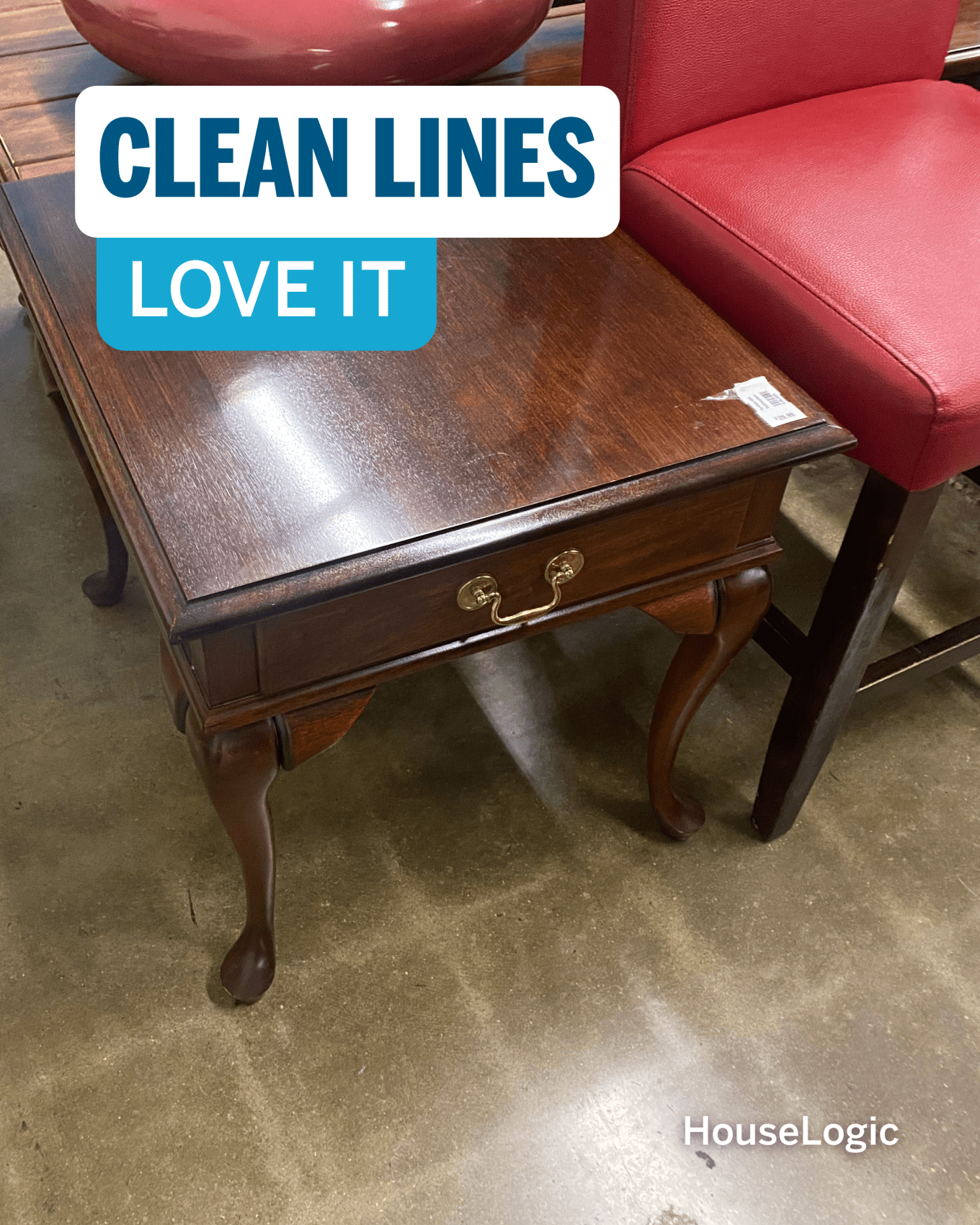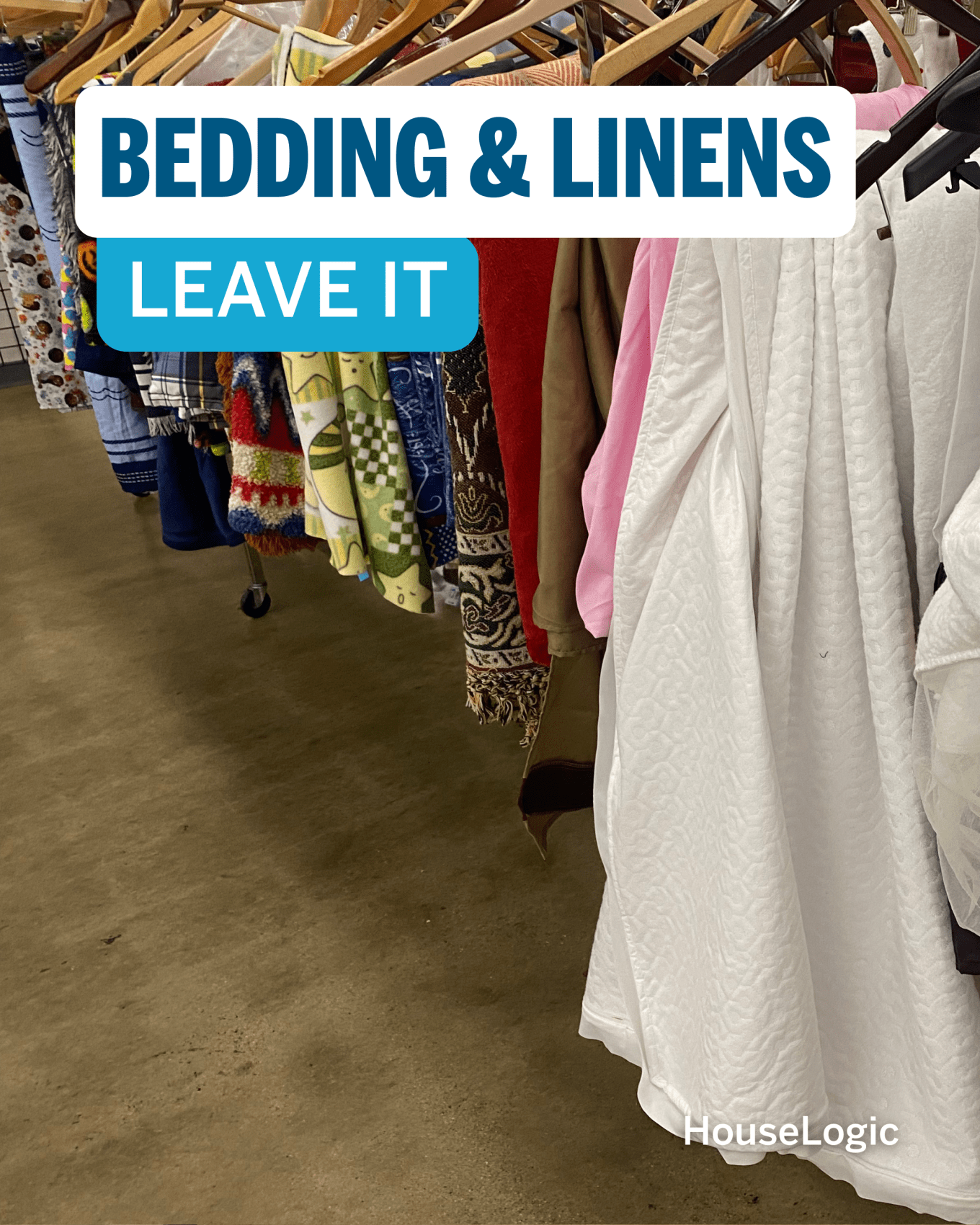Thrifting has gone from a quaint hobby to a mainstream activity, and from clothing to home décor and beyond. Home thrifting shoppers enjoy the thrill of finding one-of-a-kind pieces that tell a story versus a big box store dupe, says Ann Couser Kittredge, creator of Dabbling & Decorating, a New England-based home décor blog. “It’s about the joy of the chase and the stories each piece brings into a home.” If you’re a potential seller, home thrifting can also distinguish your home from the competition.
What’s in Home Thrifting for You?
Thrift shopping has increased from 83% to nearly 90% of consumers in just two years. Gen Z shoppers are leading the way, making secondhand their go-to for items including furniture and home décor, according to a 2024 Savers Thrift report.
Here’s why homeowners, stagers, and remodelers are home thrifting:
- Individuality: “What makes your home stand out are the layers of colors, textures, and interesting items,” says Willow Wright, owner of Urban Redeux in the Washington, D.C., metro area. “It's the mix of something shiny and new displayed with a well-worn or a quirky object displayed on a bookshelf."
- Environmental values: "A growing social consciousness around living more sustainably has encouraged people to purchase pre-loved over new," Wright says.
- Game appeal: TikTok and Instagram are full of tales of “thrift hauls" and estate sale adventures. "Social media has gamified the search for one-of-a-kind and affordable finds,” notes Ben Mizes, real estate agent and CEO of Clever Real Estate in St. Louis. Shoppers post items they’ve scored, such as a chandelier (the sleek, artistic versions) for a few dollars that’s worth hundreds.
Home Thrifting Items to Look For
Make no-regrets choices by following these four tips from the pros:
- Aim for timeless pieces: Focusing on lighting, furniture, and accessories like mirrors, pottery, and glassware, says Bar Zakheim, CEO of Better Place Design & Build in San Diego. “They are timeless, and with a little cleaning, most of them are highly sought after as vintage pieces."
- Choose clean lines: If you don’t want your thrifted items to look like part of a period movie set, look for mid-century modern (MCM) furniture and decor. Their clean lines and functional designs make pieces from this period easy to incorporate in either traditional or contemporary homes. Zakheim recommends MCM teak and walnut chairs, credenzas, and tables. "Scandinavian clean-lined designs and today's trending curvy, biomorphic modernism are also strong bets,” he adds.
- Keep a balance in incorporating finds: "Offset vintage finds with streamlined modern components,” says Jacob Naig, a real estate agent, stager, and investor based in Des Moines, Iowa. Placing an MCM find alongside a contemporary rug can offer balance “that keeps it funky."
- Look for solid wood furniture: Quality wood furniture is a valuable find, says Ray Fabik, president of Caring Transitions, which owns CTBids, an online secondhand shopping platform. "These pieces, at an affordable price, are hard to find these days,” Fabik says. He recommends scouting for vintage wood treasures that need a little love to make them look good as new. Naig recommends solid oak dressers or MCM credenzas, which can keep their value and often outlast modern engineered wood.
What to Avoid
"Skip buying upholstered furniture, mattresses, and bedding, because they can hide allergens, pests, and bacteria, which are impossible to fully clean," says Zakheim. He also steers away from electronics and appliances because of potentially faulty wiring and fire hazards.
Where to Hunt for Thrift Store Home Decor and Furniture
Brick-and-mortar and online resources can be great hunting ground for home thrifting scores. Retail options include Habitat for Humanity Restore, consignment shops, estate sales, and local thrift stores, Zakheim says.
Build relationships with secondhand store owners and let them know what you’re looking for. "We often call customers when we get something in that we know they'd love," Wright says.
Digital platforms have expanded options. In addition to popular sites such as CraigsList, eBay, and Etsy, Zakheim recommends:
- AptDeco: An online marketplace where shoppers can purchase used furniture directly from sellers, with the platform handling delivery and logistics.
- Chairish: A curated online marketplace where buyers purchase vintage, antique, and contemporary furniture and art directly from over 12,000 small businesses, artists, and sellers, with the platform handling logistics. It focuses on high-end, one-of-a-kind design pieces, with 85% of its inventory being vintage.
- Facebook Marketplace: A peer-to-peer platform where buyers purchase furniture and home décor directly from local sellers, offering access to both budget-friendly finds and higher-end pieces at significantly reduced prices. It can help you find affordable secondhand treasures in your local area.
Whether you're drawn to the excitement of discovering a hidden gem or simply want to create a home that feels uniquely yours, home thrifting offers something that mass-produced furniture never can. It allows you to decorate sustainably without sacrificing style and to find quality pieces at prices that won't drain your wallet. Best of all, each thrifted item comes with a history, adding character and depth to your home.

